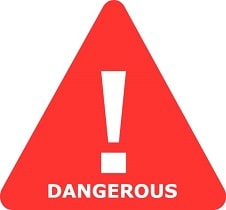Is RWJ 26251 Safe in Breastfeeding
Question
I am a breastfeeding mother and i want to know if it is safe to use RWJ 26251? Is RWJ 26251 safe for nursing mother and child? Does RWJ 26251 extracts into breast milk? Does RWJ 26251 has any long term or short term side effects on infants? Can RWJ 26251 influence milk supply or can RWJ 26251 decrease milk supply in lactating mothers?
RWJ 26251 lactation summary

- DrLact safety Score for RWJ 26251 is 7 out of 8 which is considered Dangerous as per our analyses.
- A safety Score of 7 indicates that usage of RWJ 26251 may cause toxic or severe side effects in breastfed baby.
- Our study of different scientific research indicates that RWJ 26251 may cause moderate to high side effects or may affect milk supply in lactating mother.
- Our suggestion is to use safer alternate options rather than using RWJ 26251 .
- Usage of RWJ 26251 is in contradiction to breastfeeding hence if it is must to use RWJ 26251 and there is no better alternative available then breastfeeding shall be stopped permanently or temporarily.
- Score calculated using the DrLact safety Version 1.2 model, this score ranges from 0 to 8 and measures overall safety of drug in lactation. Scores are primarily calculated using publicly available case studies, research papers, other scientific journals and publically available data.
Answer by Dr. Ru: About RWJ 26251 usage in lactation
Drug is cleared from the body in 7 elimination half-lives. Resuming breastfeeding is likely safe after 48 hours of pumping-and-dumping.
Answer by DrLact: About RWJ 26251 usage in lactation
Because there is no published experience with RWJ 26251 during breastfeeding, it should be avoided during breastfeeding, especially while nursing a newborn or preterm infant.[1][2] One group of authors recommends withholding breastfeeding for at 48 hours after a dose and longer in patients with impaired kidney function.[2] Chemotherapy may adversely affect the normal microbiome and chemical makeup of breastmilk.[3] Women who receive chemotherapy during pregnancy are more likely to have difficulty nursing their infant.[4]
Alternate Drugs
Azelaic Acid(Safe)
Carboplatin(Dangerous)
Busulfan(Dangerous)
Vinblastine(Dangerous)
Paclitaxel(Dangerous)
Bleomycin(Dangerous)
Vinorelbine(Dangerous)
Vincristine(Dangerous)
Fluorouracil(Dangerous)
Erlotinib(Unsafe)
Dacarbazine(Dangerous)
Tamoxifen(Dangerous)
Cladribine(Dangerous)
Letrozole(Dangerous)
Exemestane(Dangerous)
Alemtuzumab(Low Risk)
Dasatinib(Unsafe)
Rituximab(Low Risk)
Dactinomycin(Dangerous)
Thioguanine(Dangerous)
Mitoxantrone(Dangerous)
Nilotinib(Unsafe)
Bevacizumab(Low Risk)
Mercaptopurine(Safe)
Hydroxyurea(Low Risk)
Etoposide(Dangerous)
Trastuzumab(Unsafe)
Gemcitabine(Dangerous)
Doxorubicin(Dangerous)
Imatinib(Unsafe)
Nivolumab(Unsafe)
Ipilimumab(Unsafe)
Cyclophosphamide(Dangerous)
Docetaxel(Dangerous)
Cetuximab(Unsafe)
Pazopanib(Unsafe)
Cisplatin(Unsafe)
Azathioprine(Safe)
Methotrexate(Low Risk)
Fluorouracil(Dangerous)
Cladribine(Dangerous)
Alemtuzumab(Low Risk)
Tacrolimus(Safe)
Fingolimod(Unsafe)
Mercaptopurine(Safe)
Sirolimus(Unsafe)
Gemcitabine(Dangerous)
Everolimus(Unsafe)
Leflunomide(Dangerous)
Cyclosporine(Safe)
Dimethyl fumarate(Low Risk)
Pimecrolimus(Low Risk)
